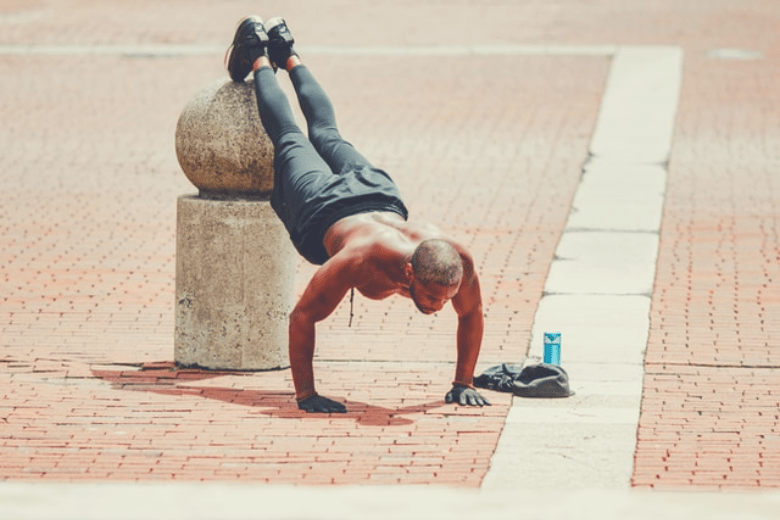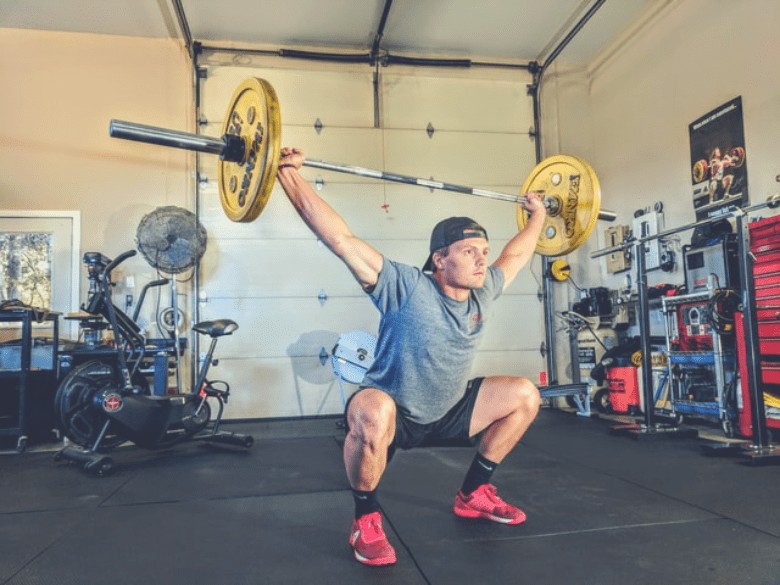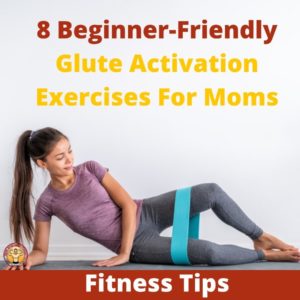If you’re new to fitness, you likely have a million questions running through your head about the subject.
How much protein should I be getting?
What does a proper squat look like?
How much cardio should I be doing each week?
Of course, another common question people ask when getting fit is what builds more muscle overtime — training with weights or simply your bodyweight?
If you wish to learn more about body weights vs. weights and achieving new levels of strength, continue reading.
Is One Better For Building Muscle?
Not all fitness programs are created equally, as different exercises can elicit different responses in the human body.
Working out with just your body weight can be challenging if you’re brand new to working out.
Furthermore, doing these workouts can help you make slight progress, but you will eventually plateau if you’re not using additional weights.
The reason being is that once you become accustomed to specific exercises, your body will hit a wall and stop progressing.
Therefore, if you’re trying to build a significant and dramatic amount of muscle mass, weighted workouts using dumbbells and barbells can give you better results.
Weightlifting relies on the principle of progressive overload.
This theory states that the body can and will adapt to any stimulus you throw its way — this is why your first time working out always feels the hardest.
However, once you become accustomed to it, your body knows what to expect and is able to perform better.
The only downside? If you become complacent in your workouts, those extra pounds of body fat will stop coming off.
Therefore, if you don’t switch things up in your routine, you’ll also stop getting stronger. In conclusion, this is why you must use heavier weights over time.
Hypertrophy and Progressive Overload
Hypertrophy is the style of training that attributes to your muscles looking visibly larger.
When you lift weight that is heavier than you’re accustomed to, the muscle fibers rip and tear.
When they mend themselves, the muscle will appear larger. The muscle group within the body will also be able to lift more weight over time.
This style of training is how bodybuilders exercise since they can target different areas of the body so well.
However, you don’t necessarily have to go to bodybuilding lengths to achieve your dream body.
But when people say they want to get in shape, they typically imagine themselves with a more ‘toned’ and muscular physique, making hypertrophy training the best mode of exercise.
How to Build Muscles at Home
It’s difficult to mimic a bodybuilder’s workout with only bodyweight, but you can still create a useful home workout that will burn calories and leave you feeling sore the next day.
Body weighted workouts can also help you burn more calories during the workout, as they typically utilize more cardio intensive movements, like jump squats and burpees.
So, if you’d rather lose weight than pack on a few extra pounds of muscle, body weighted workouts are the way to go!
You can also perform these workouts 5 to 6 times a week. Since they don’t put as much stress on your muscles, you’ll need less time to recover.
An Example of a Body Weight Workout
If you don’t have access to weights, implement this body weighted workout. We have separated it into several days of the week for ultimate impact.
Monday: Upper Body
Start the week off with a decent upper body day that targets your biceps, back, chest, and triceps.
You can even throw some core workouts in there towards the end.
- Start with pull-ups. Do 5 sets of 15 reps. Rest for 30 seconds in between your sets. You can purchase a pull-up bar to attach to your doorframe. If you can’t pull yourself up just yet, use a resistant band for additional assistance.
- Next, do some dips. Sit on the floor in front of a chair. Place your arms behind you. Hoist your body up so that your legs are off the ground and in front of you. Dip your body down to perform a dip. Do 15 repetitions for 5 sets.
- Next, do 20 repetitions of shoulder taps for 5 sets. Get into a plank position on the ground, and tap your shoulder with the opposite hand. Rest for 30 seconds in between each set.
- Finish the workout with pushups to burn your pectoralis major out. Do 10 repetitions for 4 sets. If you can’t get your body off the ground, do these on your knees. You may also elevate your wrists by using a chair or bench for support.
Wednesday: Lower Body
Take a day off on Tuesday if you’re feeling sore. But you better rest up, because Wednesday is leg day. Focus on feeling the burn in your calves, quads, and hamstrings.
- Start with 3 sets of 20 jumping squats. Rest for 30 seconds in between.
- For this second exercise, do calf-raises. Hold onto a chair and raise yourself up onto your tip-toes. Then, slowly lower yourself back down. Repeat this movement and do 25 repetitions for 5 sets. Take brief rests — around 30 seconds between each set.
- Next, do 45 seconds of crab walks. Bend your knees and squat down and walk from one side of the room to the other — keeping that crouched position the entire time.
- Next, do 15 side lunges on each leg. Do this for 5 sets.
- Move into a reverse lunge. Step behind your body with your leg. Bend down, making sure your knee does not hit the ground. Do this exercise for 5 sets of 20 repetitions.
- Finish off this workout with a wall sit. Press your entire back, against an empty wall, squat down as if you’re sitting in a chair, and then hold this position for 45 seconds. Do this 5 times. Increase the amount of time each set if 45 seconds is too easy.
Friday: Core
On Friday, finish your week off by doing a killer core exercise. You want to have solid abdominal muscles, as they play a large role in your posture.
- Do 20 Russian twists for 5 sets.
- Do 15 reverse crunches for 5 sets.
- Do 4 plank sessions and time yourself for a full 60 seconds.
- Do 20 shoulder taps for 5 sets.
- Ask a partner to hold your feet down and do 3 set of 10 crunches.
- Do 45 seconds of mountain climbers for 5 sets.
Saturday
Make your final day working out a cardio-intensive day. Partake in a body weighted activity that keeps you moving for an entire hour. Take your pick. You can try:
- Yoga
- Zumba
- Hip-Hop
- Tabata
- Jumping Rope
- Running or jogging
Who are Bodyweighted Exercises For?

Body weighted workouts are great for new moms who may not have the time to head to the gym if they’re at home with their baby.
These workouts can be done in another room while their baby is asleep — no need to drive to the gym at any point in the day.
These types of workouts are also fantastic for people who have suffered joint or knee injuries in the past. Just take out the jumping movements.
Seniors can also benefit from doing a few core workouts a week. Using too much weight can place a considerable amount of strain on their joints and bones.
But body weighted exercises will provide a nice and healthy challenge!
The Benefits of Training With Bodyweight
The bodyweight vs. weights debate is widely talked about in the fitness community, but here are a few reasons why training with bodyweight is also effective in its own way!
It’s Cost-effective
Since training with just your bodyweight doesn’t utilize weights, equipment, or a gym membership, it is cheaper and technically free.
You only need an empty room with ample space.
Workouts are Quick
Bodyweighted workouts are also pretty quick, too — they tend to last anywhere between twenty and thirty minutes, whereas weighted exercises can last up to an hour.
Recover in no Time
Additionally, recovery is speedy. You may be sore for a couple of days at most.
Body weighted workouts are also fantastic for beginners who are new to fitness. More emphasis is placed onto your form, than the amount of weight you can move.
This allows you to build up your strength and confidence in the comfort of your own home.
How to Start Weight Training

One of the most well-known powerlifting programs is Stronglifts 5×5.
It’s a rigorous program designed to get you out of your comfort zone and has you lifting weight well above the level of resistance your body provides.
If you’re new to weight training, this is an excellent place to start.
Since the repetitions of the exercises are so low, you’ll have to compensate by cranking up the amount of weight. You may even surprise yourself with how much weight you can lift.
The Benefits of Training With Weights
Create More Lean Muscle
Cardio alone can’t give you that impressive physique you’ve always longed for.
While it’s great for burning fat, the only way to truly change your body composition is to lift heavy weights.
Additionally, the more muscle you build, the more calories you can burn throughout the day.
Lastly, when you shed this fat, your body will look tighter and fitter, since you’ll have built a strong foundation underneath the extra weight.
Lifting Weights is More Challenging

You’ll be in competition with yourself, which often gives many people the incentive to workout consistently.
When you’re lifting heavy, you’ll also have another way to scale your progress.
Eat More
Modern diet culture has caused many people to think that undereating is the only way to achieve your goal body.
One of the great things about weightlifting is that it’s an exercise regime that actually encourages you to eat!
To build significant muscle mass, you must be eating in a surplus. This boost in calories will give you the energy to create more muscle and reach new limits in the gym.
Even though there are several benefits of training with just your body weight, the bottom line is that training with weights reigns supreme when it comes to packing on the muscle.
Think about investing in a gym membership if you’re trying to look like the movie stars and fitness models you see on the cover of magazines.
Their physiques are indeed attainable with the right diet and workout program.
How Much Weight is Enough?
Initially, finding the perfect amount of weight for your body type will be challenging. You don’t want to go too heavy that your form on specific exercise crumbles.
But at the same time, you don’t want to go too light that your workouts are ineffective.
To determine the perfect range, do 12 repetitions with solid form. The last 3 reps should be tough, but still do-able.
Once you have this principle down, you can play around with different weights, sets, and repetitions to create the perfect workout for your goals and level of experience.
High Rep or Low Rep? How to Design Your Own Workout for Your Goals
Learning how many reps to do when working out can also influence your progress.
If you choose to do bodyweight exercises at home, challenge yourself with high repetitions. Stay within a 15 to 30 rep range.
The point of these workouts is to tire your body out, increase your heart rate, and burn calories.
If you’re working out with weights, this high repetition range is not realistic. Therefore, for hypertrophy centered workouts, aim for a 8 to 12 rep range.
Final Thoughts
The style of training you choose ultimately affects your final results.
Therefore, learn the pros of weighted and body weighted training when whipping your body into shape.
New people to fitness may feel confused as to which one can help you build your dream body, but this boils down to what your goals are.
Want to lose weight and a bit of muscle mass?
If you don’t have time to visit a gym, bodyweight workouts are excellent. They can get your heart racing and blood pumping.
However, understand that if you’re consistent, they will get too comfortable and boring once you hit your plateau.
If you want to find new ways to grow and challenge your body, working out with weights is the way to go.



